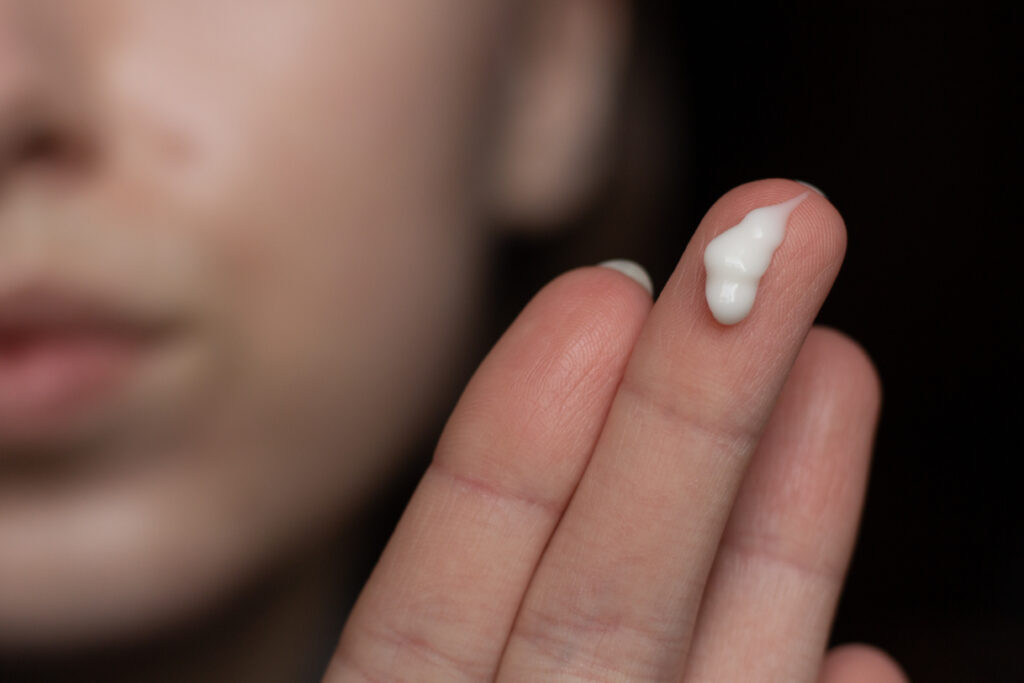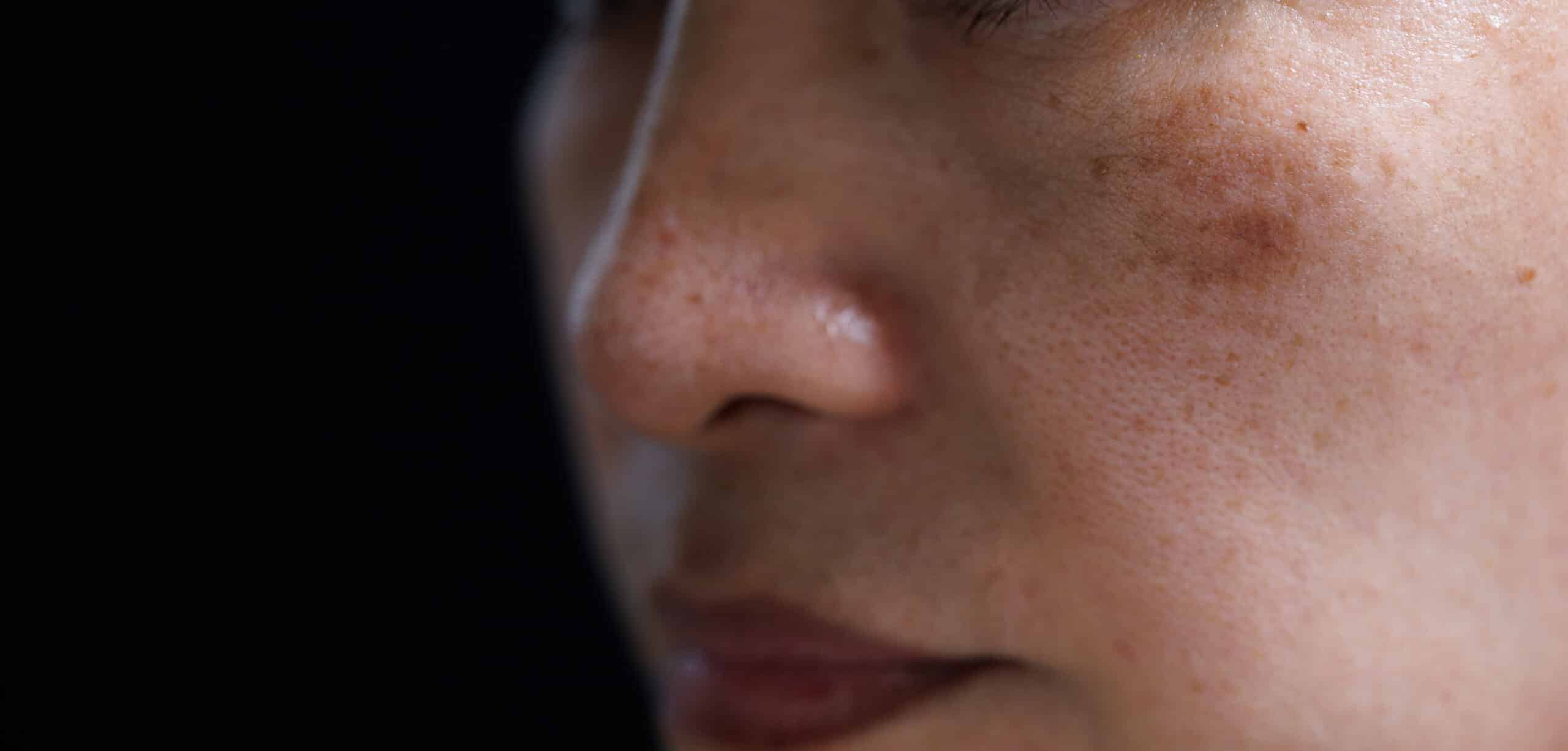
Dr Debbie Woo: What Causes Melasma and How To Treat It?
- March 19, 2024


Dark spots, freckles, melasma, and uneven skin tone affect people of all ages and skin types. Frustrated by these discolourations, individuals often seek aesthetic solutions for a clearer and more even complexion. In those of Asian descent, with naturally higher melanin levels, melasma can be more challenging to treat.
Beyond its physical attributes, melasma is emotionally distressing for affected individuals. While painless, the patches from melasma can make one feel self-conscious.
Let’s find out more about the underlying causes of melasma and explore the available pigmentation treatments in Singapore.
Brown patches, primarily on sun-exposed areas of the face, are referred to as melasma. It commonly affects women, especially during their reproductive years, and individuals with Fitzpatrick skin types III-V, which are more pigmented. While more common in women, men also experience melasma.
Unlike other forms of pigmentation (freckles, age spots, post-inflammatory hyperpigmentation), melasma tends to be associated with hormonal changes like pregnancy and the use of oral contraceptives. It can sometimes be challenging to tell melasma apart from other pigmentation concerns but one telling sign is melasma’s symmetrical patches.
Melasma occurs when an overproduction of melanin by skin cells leads to the formation of dark patches. To gain a better understanding of the condition, let’s look at the causes that contribute to the development of melasma.
Hormonal changes are responsible for melasma. Hormonal triggers for melasma include pregnancy, birth control pills, oral contraceptives, and hormone replacement therapy. Melasma is so common in pregnancy that it’s also referred to as the “mask of pregnancy”.
When your skin is exposed to sunlight, a process called lipid peroxidation sets off within your skin cells. This leads to the creation of free radicals. These radicals then prompt the formation of melanocytes, causing an excess production of melanin. The result is the appearance of darker patches and areas with hyperpigmentation, particularly in regions exposed to the sun.
It’s important to shield your skin from excessive sun exposure to prevent hyperpigmentation. The dark spots become more noticeable as your skin naturally renews itself. They don’t arise from recent sun exposure or age but develop gradually over time. While they can affect anyone, they are more prevalent in individuals with lighter skin tones due to lower melanin levels.
Although melasma isn’t directly inherited, its tendency to appear in people from the same families indicates a possible genetic connection. This suggests that certain genes play a role in its development. This genetic component helps shed light on why some individuals are more prone to melasma than others.
Conditions like thyroid dysfunction can trigger melasma by disturbing hormonal equilibrium, impacting melanin production and skin pigmentation. Hormones like estrogen and progesterone, particularly in females, contribute to this process.
Sunlight exposure then prompts these hormones to stimulate an overproduction of melanin, leading to endocrine melasma. This imbalance, often due to an endocrine disorder, manifests as hyperpigmented spots on the skin.
Using over-the-counter products with potent exfoliating agents and specific acne medications that make the skin more sensitive to light can lead to the onset or worsening of melasma. Prescription medications such as anti-seizure drugs and hormonal therapies have been identified as factors that increase melanin production.
Be cautious about the skincare products and medications you use, especially if you’re prone to melasma or currently undergoing treatment for it.
There are a variety of ways to treat melasma and other pigmentation concerns. At SL Aesthetic, our doctors will recommend the best treatment or combination of treatments based on your skin type and health profile.
Laser pigmentation removal treatments like the Pico Pigmentation Laser and Q-Switched Anti-Pigmentation Laser are popular choices in Singapore for treating melasma and other skin pigmentation concerns. They target melanin in the skin before breaking it down
Topicals are applied on the skin and are in the form of creams. Hydroquinone Depigmentation Cream is oneoption. It has hydroquinone, a natural skin-whitening agent derived from plants and animals that has a lightening effect on pigmented areas.
Another option is Cyspera. It contains cysteamine hydrochloride which inhibits melanin production, thus helping to reduce the appearance of pigmentation.
Your doctor might also recommend a Cosmelan peel. It works by inhibiting the enzyme responsible for melanin production in the skin, thereby reducing the production of melanin and lightening the appearance of melasma.
Among injectable treatments, you can consider Cyklpkapron, which blocks the production of melanin and reduces the appearance of melasma, or Plinest, which can promote a more even complexion by encouraging cell renewal and reducing dark spots.
Ethsome Gold PTT is a microneedling treatment where a range of skin enhancing ingredients are delivered into your skin. Ethyl ascorbyl ether, tranexamic acid, niacinamide and glutathione are those that have skin brightening qualities.
Another option is RF Gold Microneedling, where controlled thermal injury is used to reduce melanin production and improve skin tone and discoloration.
Dealing with uneven pigmentation? The treatment approach varies based on your skin type and pigmentation depth. At SL Aesthetic Clinic, we will account for these factors before providing a suitable treatment. We specialise in a range of minimally invasive to non-invasive medical aesthetic treatments in Singapore, including laser procedures.
Connect with our experienced doctors for a consultation. Our doctors, who are accredited by the Singapore Medical Council’s Aesthetic Practice Oversight Committee (APOC), will gladly guide you on the treatments best suited for you.
Like what you read? Share them!